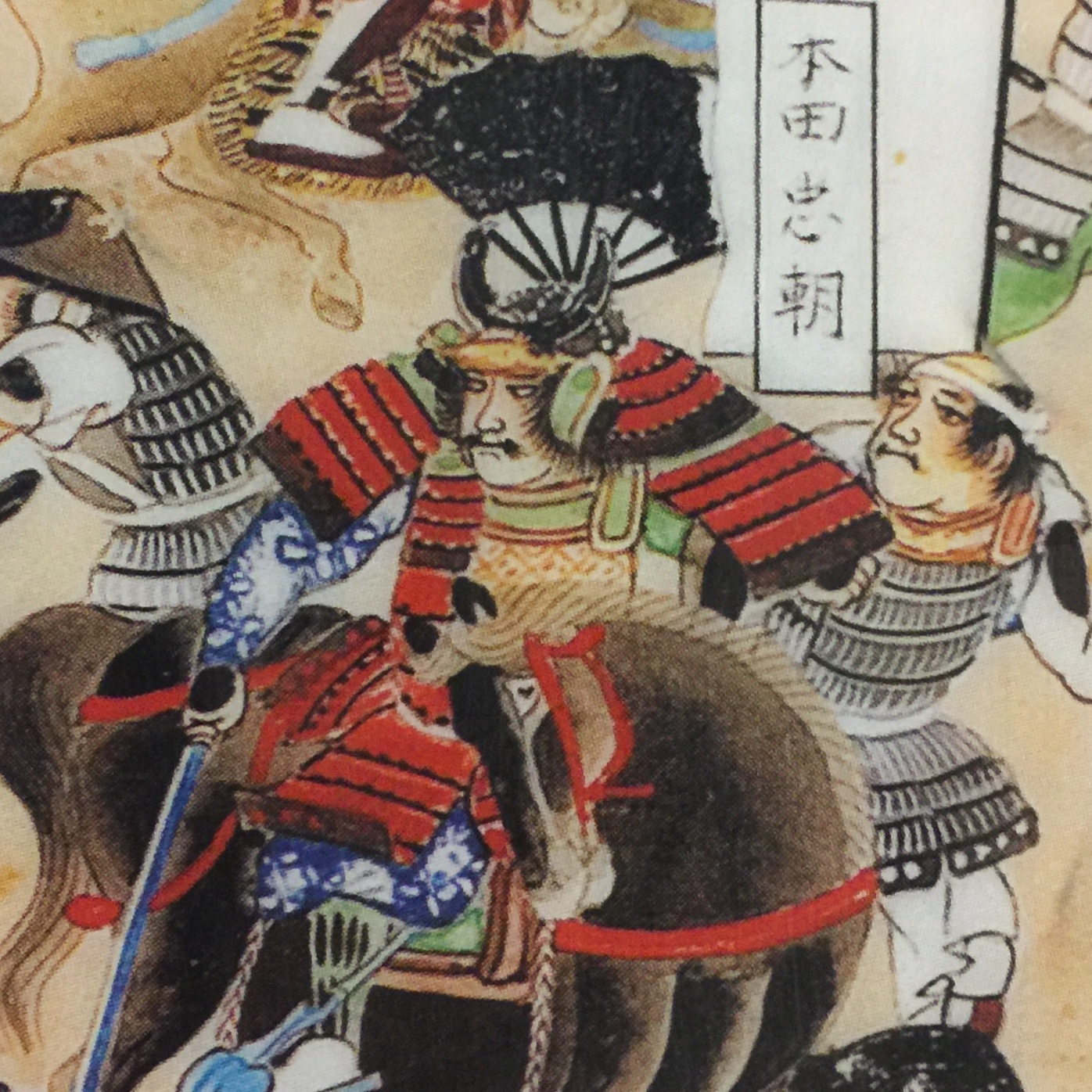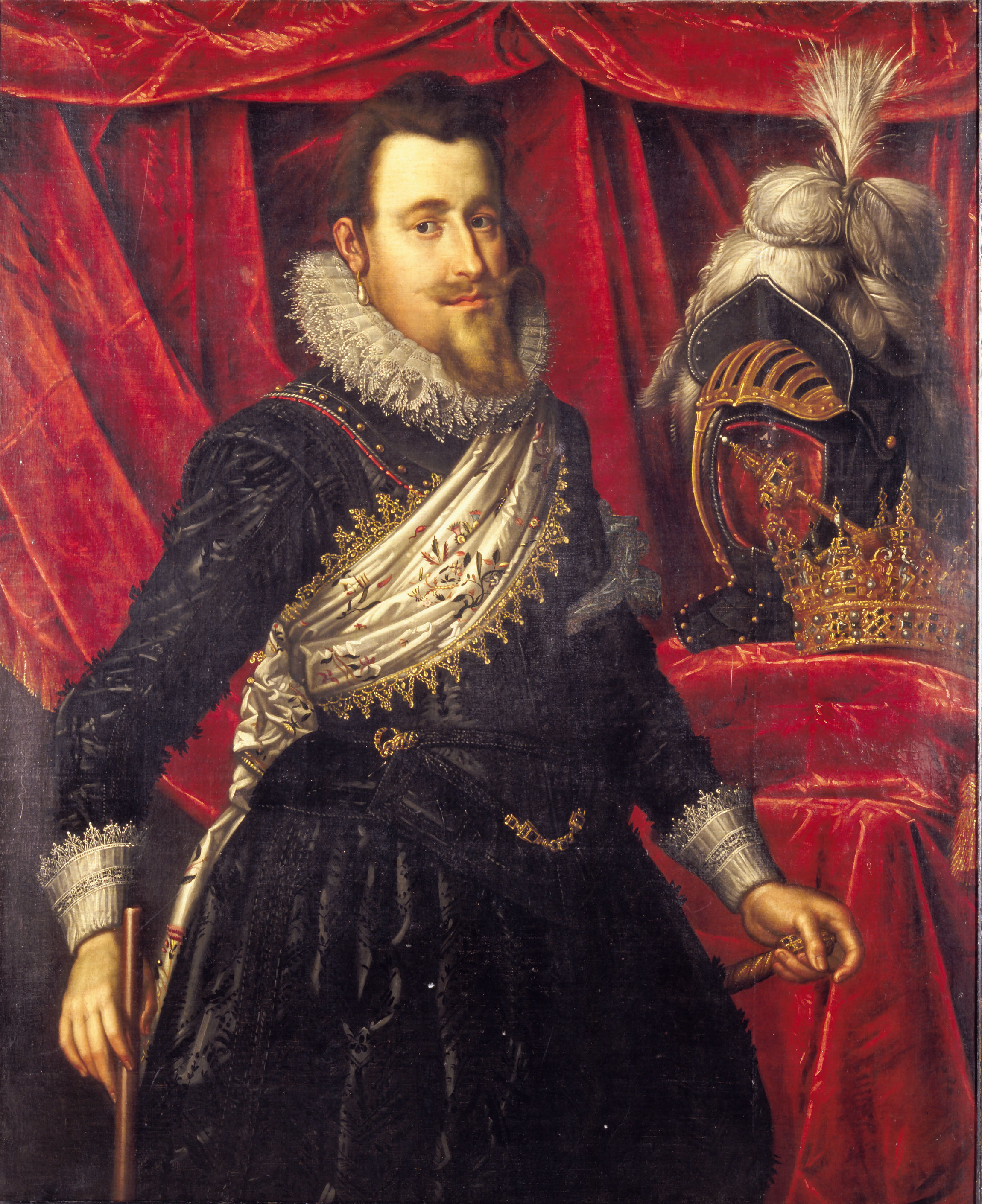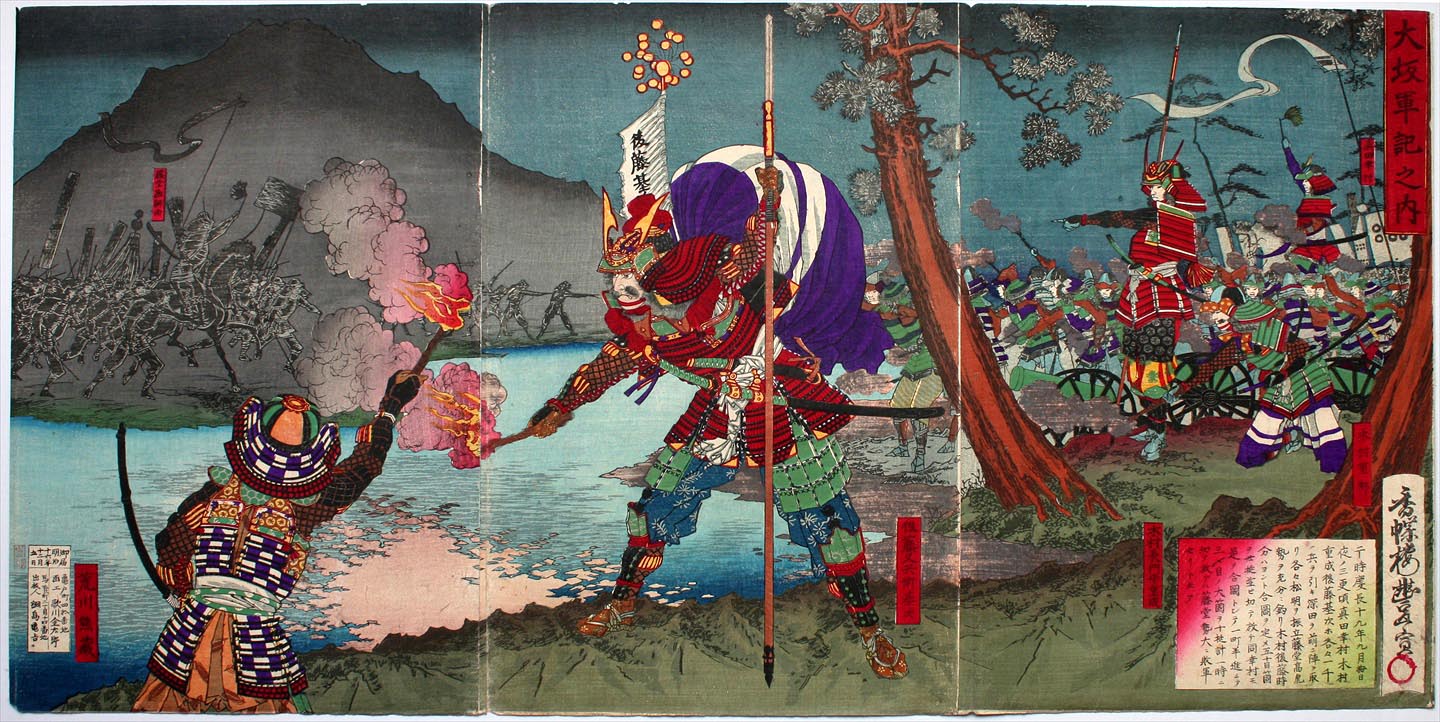|
Mōri Katsunaga
or Mōri Yoshimasa was an officer for the Toyotomi clan following the sixteenth-century Azuchi-Momoyama period through the early years of the seventeenth-century Edo period in Japan. Katsunaga fought in the Japanese invasions of Korea (1592–1598), and in the Battle of Sekigahara he joint the western legion but was defeated. Later, during the Siege of Osaka, Katsunaga, by tricking a guard, infiltrated Osaka castle is a Japanese castle in Chūō-ku, Osaka, Chūō-ku, Osaka, Japan. The castle is one of Japan's most famous landmarks and played a major role in the unification of Japan during the sixteenth century of the Azuchi–Momoyama period. Layout Th .... He defeated Honda Tadatomo (an officer for the Tokugawa) there in the summer. References Samurai 1577 births 1615 deaths Japanese warriors killed in battle {{Samurai-stub ... [...More Info...] [...Related Items...] OR: [Wikipedia] [Google] [Baidu] |
Toyotomi
The was a Japanese clan that ruled over the Japanese before the Edo period. Unity and conflict The most influential figure within the Toyotomi was Toyotomi Hideyoshi, one of the three "unifiers of Japan". Oda Nobunaga was another primary unifier and the ruler of the Oda clan at the time. Hideyoshi joined Nobunaga at a young age, but was not highly regarded because of his peasant background. Nevertheless, Hideyoshi's increasing influence allowed him to seize a significant degree of power from the Oda clan following Oda Nobunaga's death in 1582. As the virtual ruler of most of Japan, Hideyoshi received the new clan name "Toyotomi" in 1585 from the emperor, and achieved the unification of Japan in 1590. When Hideyoshi died in 1598, his son Toyotomi Hideyori was only five years old. Five regents were appointed to rule until his maturity, and conflicts among them began quickly. In 1600, Tokugawa Ieyasu deposed Hideyori and took power after winning the Battle of Sekigahara. ... [...More Info...] [...Related Items...] OR: [Wikipedia] [Google] [Baidu] |
Edo Period
The , also known as the , is the period between 1600 or 1603 and 1868 in the history of Japan, when the country was under the rule of the Tokugawa shogunate and some 300 regional ''daimyo'', or feudal lords. Emerging from the chaos of the Sengoku period, the Edo period was characterized by prolonged peace and stability, urbanization and economic growth, strict social order, Isolationism, isolationist foreign policies, and popular enjoyment of Japanese art, arts and Culture of Japan, culture. In 1600, Tokugawa Ieyasu prevailed at the Battle of Sekigahara and established hegemony over most of Japan, and in 1603 was given the title ''shogun'' by Emperor Go-Yōzei. Ieyasu resigned two years later in favor of his son Tokugawa Hidetada, Hidetada, but maintained power, and defeated the primary rival to his authority, Toyotomi Hideyori, at the Siege of Osaka in 1615 before his death the next year. Peace generally prevailed from this point on, making samurai largely redundant. Tokugawa sh ... [...More Info...] [...Related Items...] OR: [Wikipedia] [Google] [Baidu] |
Japanese Invasions Of Korea (1592–1598)
The Imjin War () was a series of two Japanese invasions of Korea: an initial invasion in 1592 also individually called the "Imjin War", a brief truce in 1596, and a second invasion in 1597 called the Chŏngyu War (). The conflict ended in 1598 with the withdrawal of Japanese forces from the Korean Peninsula after a military stalemate in Korea's southern provinces. The invasions were launched by Toyotomi Hideyoshi with the intent of conquering the Korean Peninsula and China proper, which were ruled by the Joseon and Ming dynasties, respectively. Japan quickly succeeded in occupying large portions of the Korean Peninsula, but the contribution of reinforcements by the Ming, "(Korean) war minister Yi Hang-bok pointed out that assistance from China was the only way Korea could survive." as well as the disruption of Japanese supply fleets along the western and southern coasts by the Joseon Navy, "His naval victories were to prove decisive in the Japanese defeat, although Yi was to ... [...More Info...] [...Related Items...] OR: [Wikipedia] [Google] [Baidu] |
Battle Of Sekigahara
The Battle of Sekigahara (Shinjitai: ; Kyūjitai: , Hepburn romanization: ''Sekigahara no Tatakai'') was an important battle in Japan which occurred on October 21, 1600 (Keichō 5, 15th day of the 9th month) in what is now Gifu Prefecture, Japan, at the end of the Sengoku period. This battle was fought by the forces of Tokugawa Ieyasu against a coalition loyal to the Toyotomi clan, led by Ishida Mitsunari on behalf of the young child Toyotomi Hideyori, from which several commanders defected before or during the battle, leading to a Tokugawa victory. The Battle of Sekigahara was the largest battle of Japanese feudal history and is often regarded as the most important. Mitsunari's defeat in the battle of Sekigahara is generally considered to be the beginning point of the Tokugawa shogunate, which ruled Japan for another two and a half centuries until 1868. Background The final years of Toyotomi Hideyoshi's reign were turbulent. At the time of Hideyoshi's death, his heir, Toy ... [...More Info...] [...Related Items...] OR: [Wikipedia] [Google] [Baidu] |
Siege Of Osaka
A siege () . is a military blockade of a city, or fortress, with the intent of conquering by attrition, or by well-prepared assault. Siege warfare (also called siegecrafts or poliorcetics) is a form of constant, low-intensity conflict characterized by one party holding a strong, static, defensive position. Consequently, an opportunity for negotiation between combatants is common, as proximity and fluctuating advantage can encourage diplomacy. A siege occurs when an attacker encounters a city or fortress that cannot be easily taken by a quick assault, and which refuses to surrender. Sieges involve surrounding the target to block provision of supplies and reinforcement or escape of troops (a tactic known as "investment"). This is typically coupled with attempts to reduce the fortifications by means of siege engines, artillery bombardment, mining (also known as sapping), or the use of deception or treachery to bypass defenses. Failing a military outcome, sieges can often be de ... [...More Info...] [...Related Items...] OR: [Wikipedia] [Google] [Baidu] |
Osaka Castle
is a Japanese castle in Chūō-ku, Osaka, Chūō-ku, Osaka, Japan. The castle is one of Japan's most famous landmarks and played a major role in the unification of Japan during the sixteenth century of the Azuchi–Momoyama period. Layout The inner keep of Osaka Castle is situated on a plot of land roughly one square kilometre. It is built on two raised platforms of landfill supported by sheer walls of cut rock, using a technique called burdock piling, each overlooking a moat. The keep is five stories on the outside and eight stories on the inside and built atop a tall stone foundation to protect its occupants from attackers. The main keep is surrounded by a series of moats and defensive fortifications. The castle has two moats (an inner and an outer one). The inner castle moat lies within the castle grounds and consists of two types: wet (northern-easterly) and dry (south-westerly). The outer moat meanwhile surrounds the entire castle premise, denotes the castle's outer limi ... [...More Info...] [...Related Items...] OR: [Wikipedia] [Google] [Baidu] |
Honda Tadatomo
was a Japanese samurai lord who was a retainer of the Tokugawa clan following the Azuchi–Momoyama period of the 16th century to the Edo period of the 17th century of Japan. Tadatomo was the younger son of Honda Tadakatsu, one of Four Guardians of the Tokugawa. Life Tadatomo received a 100,000-''koku'' domain at Ōtaki in Kazusa Province following the year 1600. In the year 1609, Tadatomo sheltered Don Rodrigo, who was the Spanish Governor of Philippines. During the winter campaign of Siege of Osaka, Tadatomo fought well and made a lot of contributions. However, he was defeated in a battle because of getting drunk. He was scolded by Tokugawa Ieyasu after the defeat for this mistake. This incident however changed the fate of Tadatomo. In the next year, 1615, Tadatomo fought very valiantly during the Battle of Tennōji, one of the final battles of the summer campaign of Siege of Osaka, to regain his honor by clearing his shame during the winter campaign. He led an attack th ... [...More Info...] [...Related Items...] OR: [Wikipedia] [Google] [Baidu] |
Tokugawa Clan
The is a Japanese dynasty which produced the Tokugawa shoguns who ruled Japan from 1603 to 1868 during the Edo period. It was formerly a powerful ''daimyō'' family. They nominally descended from Emperor Seiwa (850–880) and were a branch of the Minamoto clan ( Seiwa Genji) through the Matsudaira clan. The early history of the clan remains a mystery. Nominally, the Matsudaira clan is said to be descended from the Nitta clan, a branch of the Minamoto clan, but this is considered to be untrue or unlikely. History Minamoto no Yoshishige (1135–1202), grandson of Minamoto no Yoshiie (1041–1108), was the first to take the name of Nitta. He sided with his cousin Minamoto no Yoritomo against the Taira clan (1180) and accompanied him to Kamakura. Nitta Yoshisue, 4th son of Yoshishige, settled at Tokugawa (Kozuke province) and took the name of that place. Their provincial history book did not mention Minamoto clan or Nitta clan. The nominal originator of the Matsudaira clan wa ... [...More Info...] [...Related Items...] OR: [Wikipedia] [Google] [Baidu] |
Samurai
The samurai () were members of the warrior class in Japan. They were originally provincial warriors who came from wealthy landowning families who could afford to train their men to be mounted archers. In the 8th century AD, the imperial court downsized the national army and delegated the security of the countryside to these privately trained warriors. Eventually the samurai clans grew so powerful that they became the ''de facto'' rulers of the country. In the aftermath of the Gempei War (1180-1185), Japan formally passed into military rule with the founding of the first shogunate. The status of samurai became heredity by the mid-eleventh century. By the start of the Edo period, the shogun had disbanded the warrior-monk orders and peasant conscript system, leaving the samurai as the only men in the country permitted to carry weapons at all times. Because the Edo period was a time of peace, many samurai neglected their warrior training and focused on peacetime activities such as a ... [...More Info...] [...Related Items...] OR: [Wikipedia] [Google] [Baidu] |
1577 Births
Year 1577 ( MDLXXVII) was a common year starting on Tuesday of the Julian calendar. Events January–March * January 9 – The second Union of Brussels is formed, first without the Protestant counties of Holland and Zeeland (which is accepted by King Philip II of Spain), later with the Protestants, which means open rebellion of the whole of the Netherlands. * February 12 – The " Perpetual Edict", providing for the removal of Spanish troops from what is now the Netherlands, is signed in the city of Marche-en-Famenne in the Spanish Netherlands (now Belgium) by the Spanish Governor-General, Don Juan de Austria and representatives of the Dutch rebellion. The Perpetual Edict will last only five months, before Don Juan begins new attacks on the rebels. * February 23 – The new Shah of Iran, Ismail II, has most of the advisers of his late father executed, including Prince Ibrahim Mirza. * March 17 – The Cathay Company is formed, to send Martin Frob ... [...More Info...] [...Related Items...] OR: [Wikipedia] [Google] [Baidu] |
1615 Deaths
Events January–March * January 1 – The New Netherland Company is granted a three-year monopoly in North American trade, between the 40th and 45th parallels. * January 30 – Japan's diplomatic mission to Europe, led by Hasekura Tsunenaga, meets with King Philip III of Spain at Madrid and presents an offer of a treaty. * February 2 – Sir Thomas Roe sets out to become the first ambassador from the court of the King of England to the Mughal Emperor Jahangir, departing from Tilbury Hope on the ship ''Lyon'' under the command of captain Christopher Newport. * February 17 – Japan's envoy to Europe, Hasekura Tsunenaga, receives a Christian baptism by the royal chaplain, Diego de Guzmán, and receives the European name Felipe Francisco Hasekura. * March 10 – John Ogilvie, a Jesuit priest, is hanged and drawn at Glasgow Cross in Scotland for refusing to pledge allegiance to King James VI of Scotland; he will be canonised in 1976, becoming ... [...More Info...] [...Related Items...] OR: [Wikipedia] [Google] [Baidu] |






